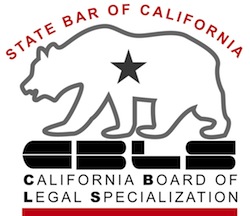Who gets paid in Chapter 13, and in what order, makes a huge different when charting your course.
Sometimes, we must realize that reality exists outside of television shows.
And when real-world reality hits some debtors, it’s a trainwreck.
It comes up for me when Chapter 13 clients and I sit down to write the plan for the case.
The plan will set out which classes of creditors get paid over the five year life of the plan. The law provides the order in which those classes of creditors are paid.
Too often, my ever-optimistic client wants to keep all of his assets with secured debts AND pay off the must-pay back support or non dishchargeable taxes.
Who gets paid through the plan
Secured debts are things like car loans, home mortgages , and property taxes.
If you don’t pay a secured debt, the creditor has the right to take the asset that is the collateral.
More on secured debts in bankruptcy
In Chapter 13, you get a choice on secured debts: you can cure any back payments through the Chapter 13 plan or you can surrender the asset.
If you surrender the collateral, you owe neither the back payments nor the payments that come due after you file bankruptcy.
Priority claims in a Chapter 13 must be paid in full over the life of the plan to get the discharge.
The debtor gets no choice; it’s the law. Priority claims are usually income taxes and family support.
The zinger is that the Chapter 13 trustee generally pays the secured claims first.
Over optimism
So here’s the dilemma. It’s hard to decide to give up houses and cars. You’ve usually got some part of yourself invested in the choice.
Even if the car is a gas guzzler or the house burdened with a bad loan or too little value, it’s tempting to assume you can gut it out. Make up the back payments over five years and have something at the end.
When the collateral is a toy, a boat or bike, or a rental home, you spin yourself messages of entitlement or future appreciation.
You commit in your plan to pay both the secured claims and the priority claims within the five year limit of a chapter 13 plan.
You look at your budget and it works, barely. You can project enough money to do it all within five years.
Hit a bump
But then, mid plan, life intervenes. Your work hours are reduced. The car breaks down. A family member gets sick.
And all of a sudden, there isn’t enough money to make the plan payments that get you everything.
Worse, what you’ve paid into the plan has gone for things you didn’t have to pay for: the Harley, the underwater rental, the house that’s too expensive. The trustee’s order of distribution puts the debts that won’t go away behind the options you chose.
Depending on how significant the loss of income or increased expenses, you may be able to recover.
But maybe not.
Plan for the unexpected
When making choices at the beginning of a Chapter 13, don’t assume that everything in your financial life going forward will be uniformly stable or improving.
What happens if there is a major negative event in your life? Have you taken care of the most important debts first?
Or does the overly optimistic plan you propose have you continuing to live on the financial edge?
Image courtesy of Flickr and bwats2.







It’s true that clients have unrealistic expectations, and I can’t blame them for hoping for the best. But budgets and financial commitments are never stable or predictable. That’s why you have to create a smart, probable plan – or you’ll never escape the bankruptcy blues.
And counsel needs to point out to debtors the order in which the trustee pays claims. Otherwise, they have no idea that if there’s a bump in their income, they may own a Harley but still owe Uncle Sam for back taxes.